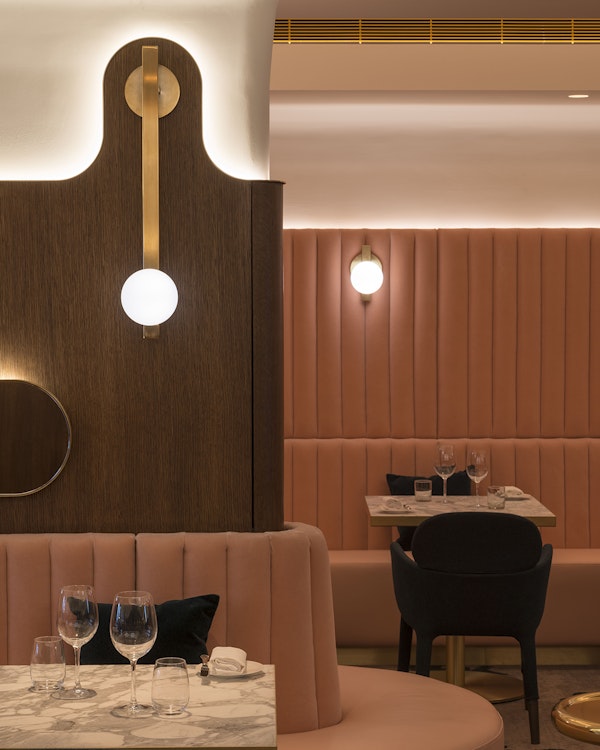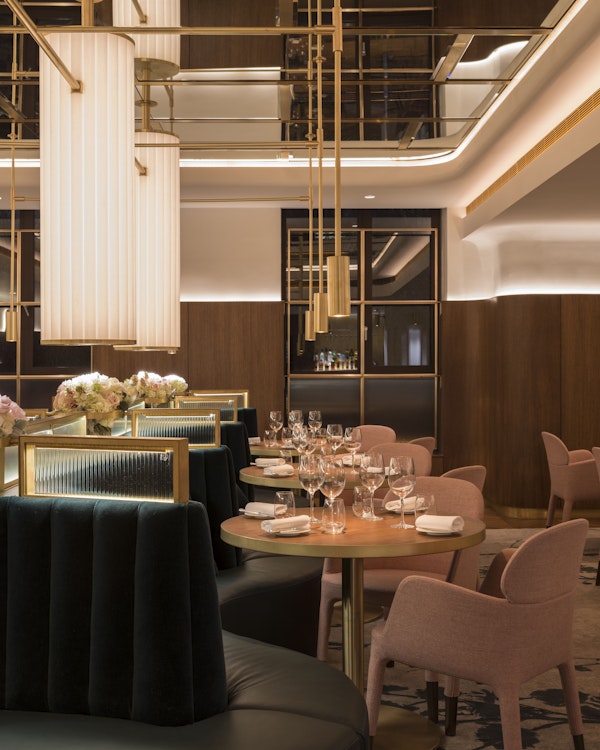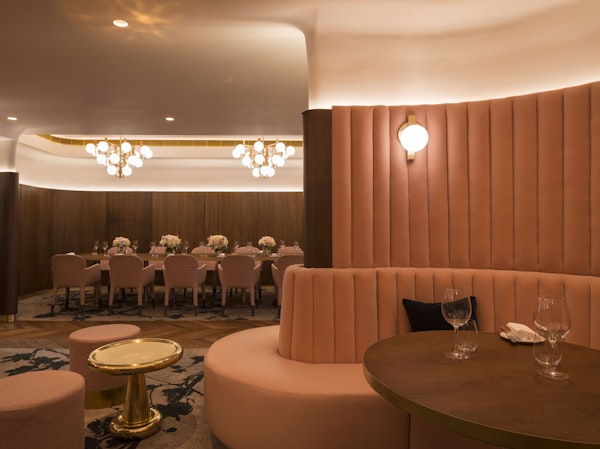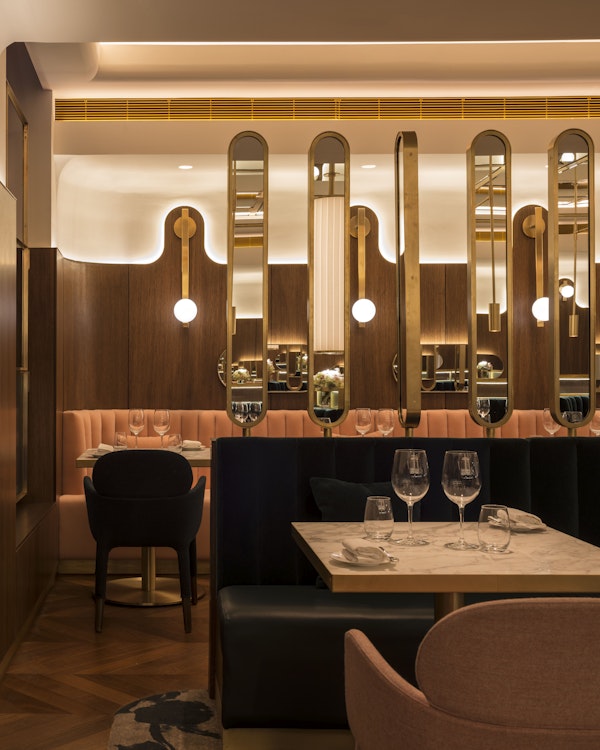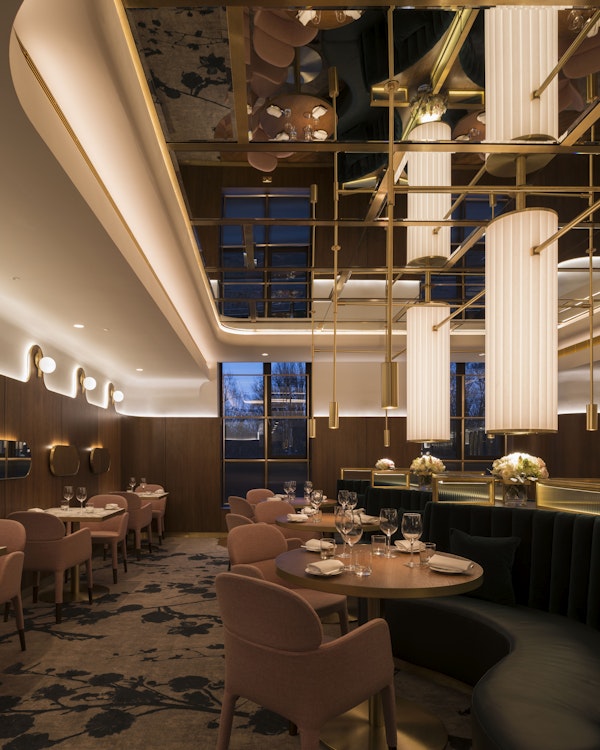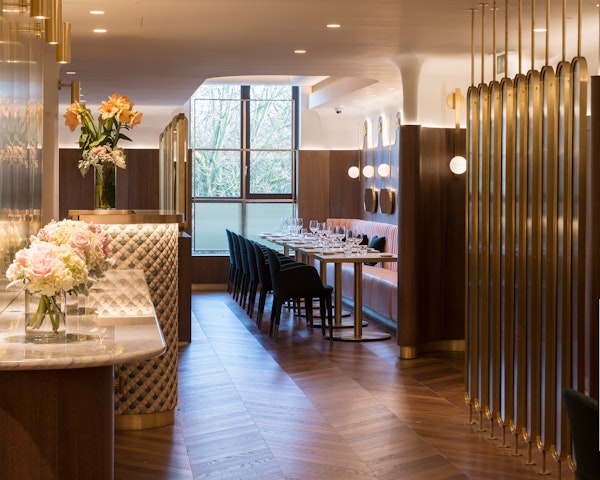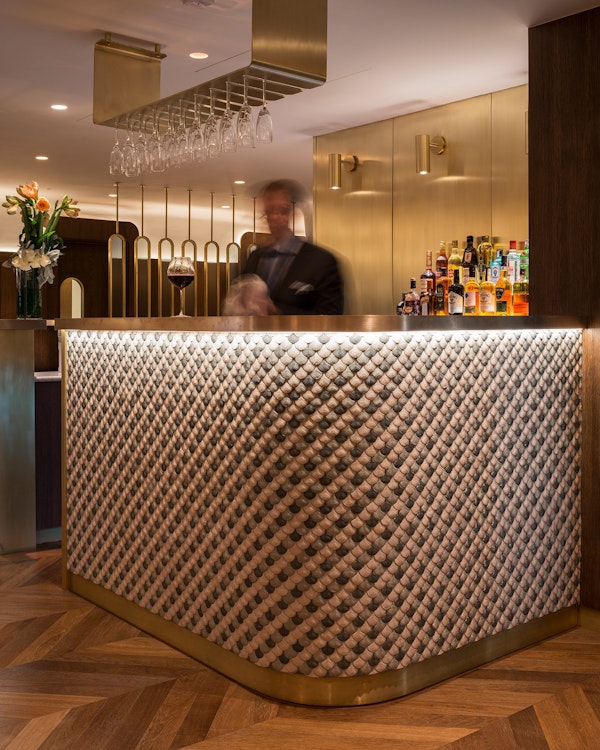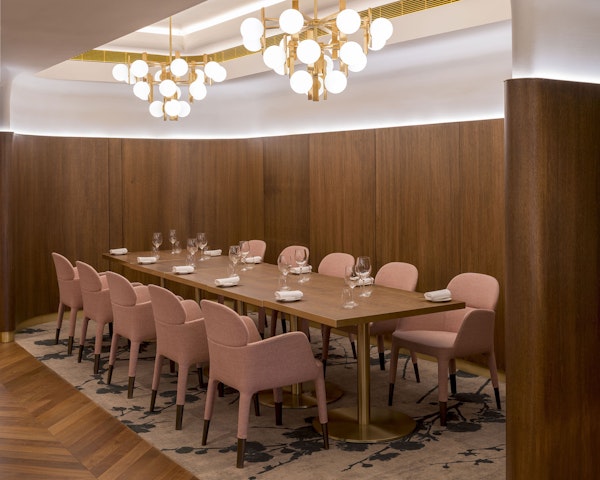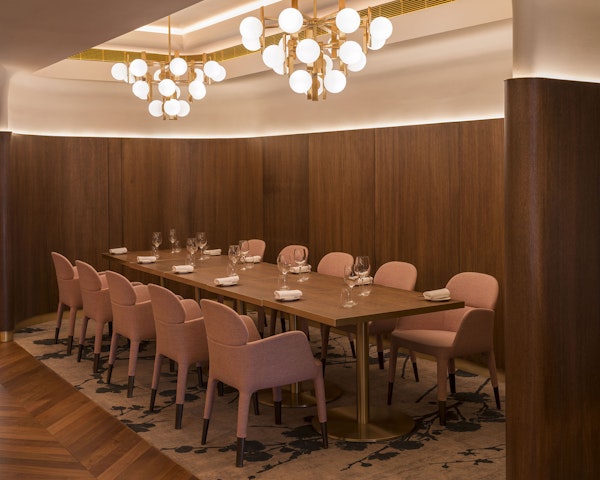Glovers Alley


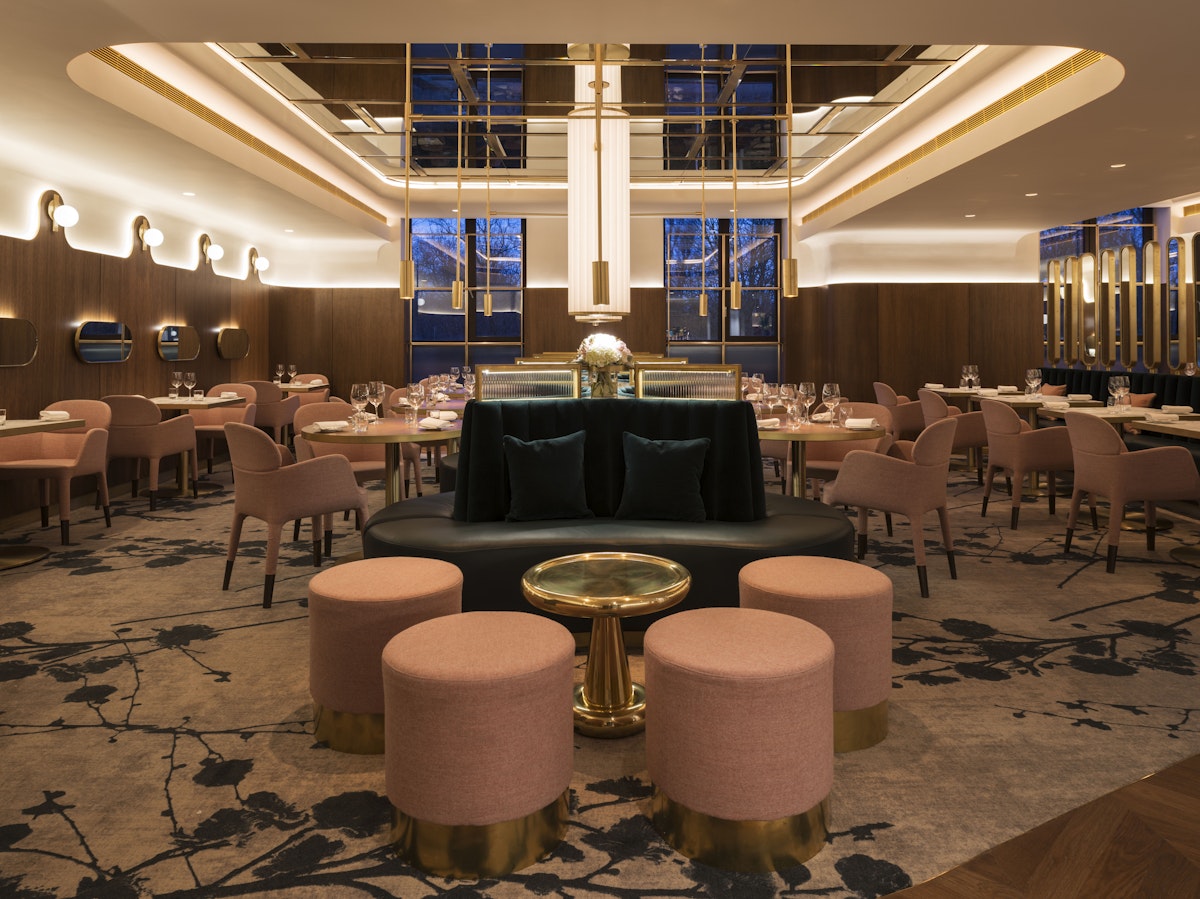
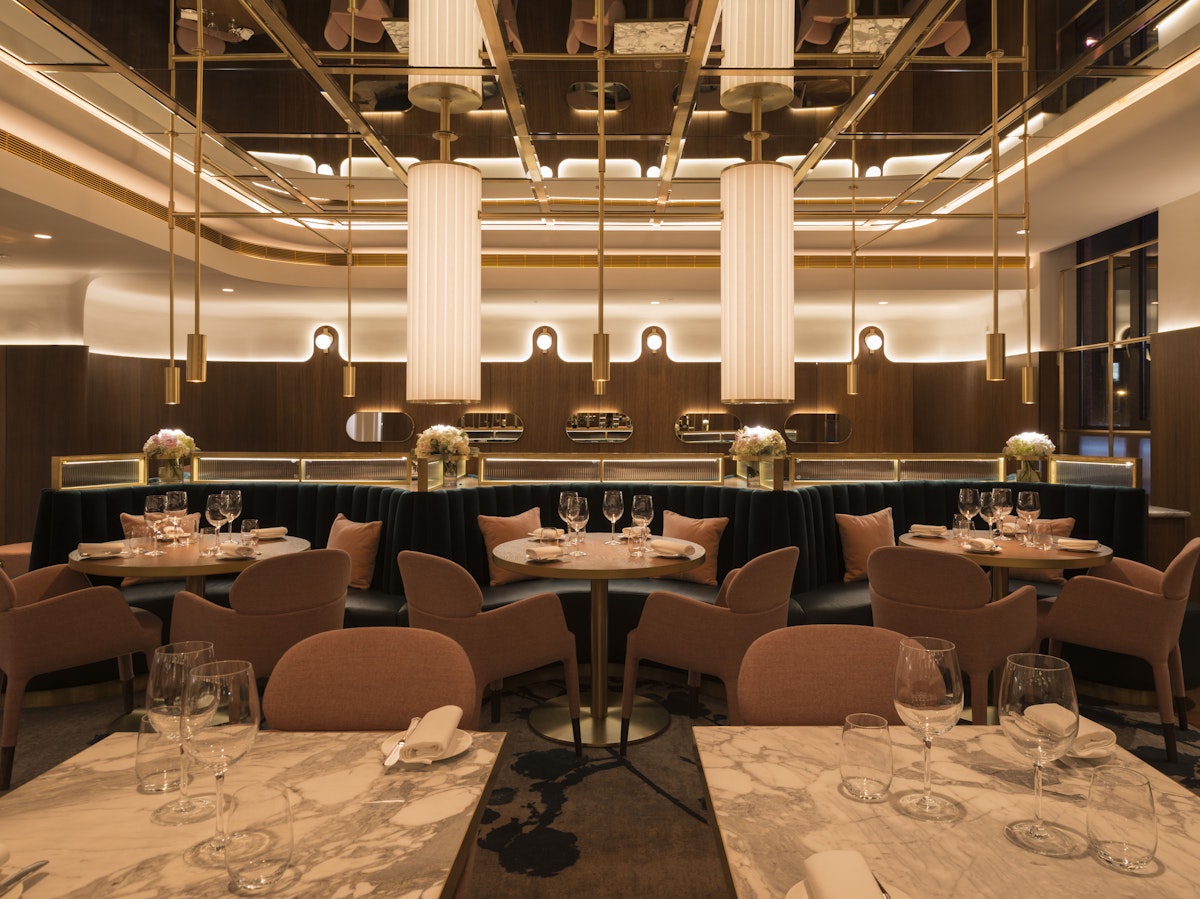
Glovers Alley
Foundry have just completed Glovers Alley, the new restaurant in The Fitzwilliam Hotel, overlooking St Stephens Green in Dublin.
The client brief called for a restaurant that would be sophisticated, glamorous and meet the demanding and sometimes conflicting requirements of both fine dining and hotel breakfast service.
The design concept for the new restaurant reimagines Pullman Class dining through a contemporary lens. Fluid lines and luxurious materials unite a sequence of intimate spaces in an elegant whole. Evocative of the Streamline Moderne style of the 1930s whilst confidently of their time, the glamorous yet informal interiors are defined by linings of rich fumed oak and brass, coved plasterwork and Deco-Pastel leathers.
Lighting design was integral to this interior concept and called for a combination of statement feature lighting to add scale, richness and interest to the interiors and architectural lighting to highlight form, structure and surface. The lighting also had to deliver a variety of moods from a bright and breezy breakfast to an intimate and moody late evening setting and had to ensure that those areas deep in the plan were no less appealing to customers than the prime day-lit areas to the front.
The feature lighting was initially sketch designed by Project Orange before being developed in collaboration. We then took on responsibility for detail technical design and fabrication. The central feature fitting in particular presented challenges in that it required millimetre perfect coordination with fixings through the mirrored ceiling in which the fitting is reflected, seemingly doubling in height. The resultant fittings comprise a comprehensive family of brass and glass sconces and chandeliers that combine continuity with variety and provide visual interest throughout the space.
The various architectural lighting installations serve a number of different purposes. The first of these is a continuous concealed LED strip that runs behind a brass trim to the head of the fumed oak panelling. This lighting changes colour temperature as it is dimmed to emulate the warm effects of tungsten lighting for the evening settings whilst being crisp and bright for earlier in the day. The light accents the seamless coved transition from wall to ceiling above the panel line and helps to brighten and raise the ceilings. Coved and stepped coffers over key seating areas are also lit in the same way and further serve to accentuate the perception of height. Architectural lighting is also concealed behind the brass trimmed mirrors that then appear to float on the panelled walls that glow in the warm light. Architectural lighting is also used to discreetly spotlight each table and bring the food offer centre stage.
“The completed installation exceeded the brief on all criteria. In essence, the role of the lighting design was to bring the interior alive, to raise the ceilings, to emphasise the architectural detail, to celebrate the food and to seduce the customer. It works on every level.” Christopher Ash – Project Orange
“Everyone who walks in here, their eyes kind of light up, when people see it and they love it, that makes me happy.” Andy McFadden – Executive Chef
- Collaborators
Project Orange
- Photography
James Newton
